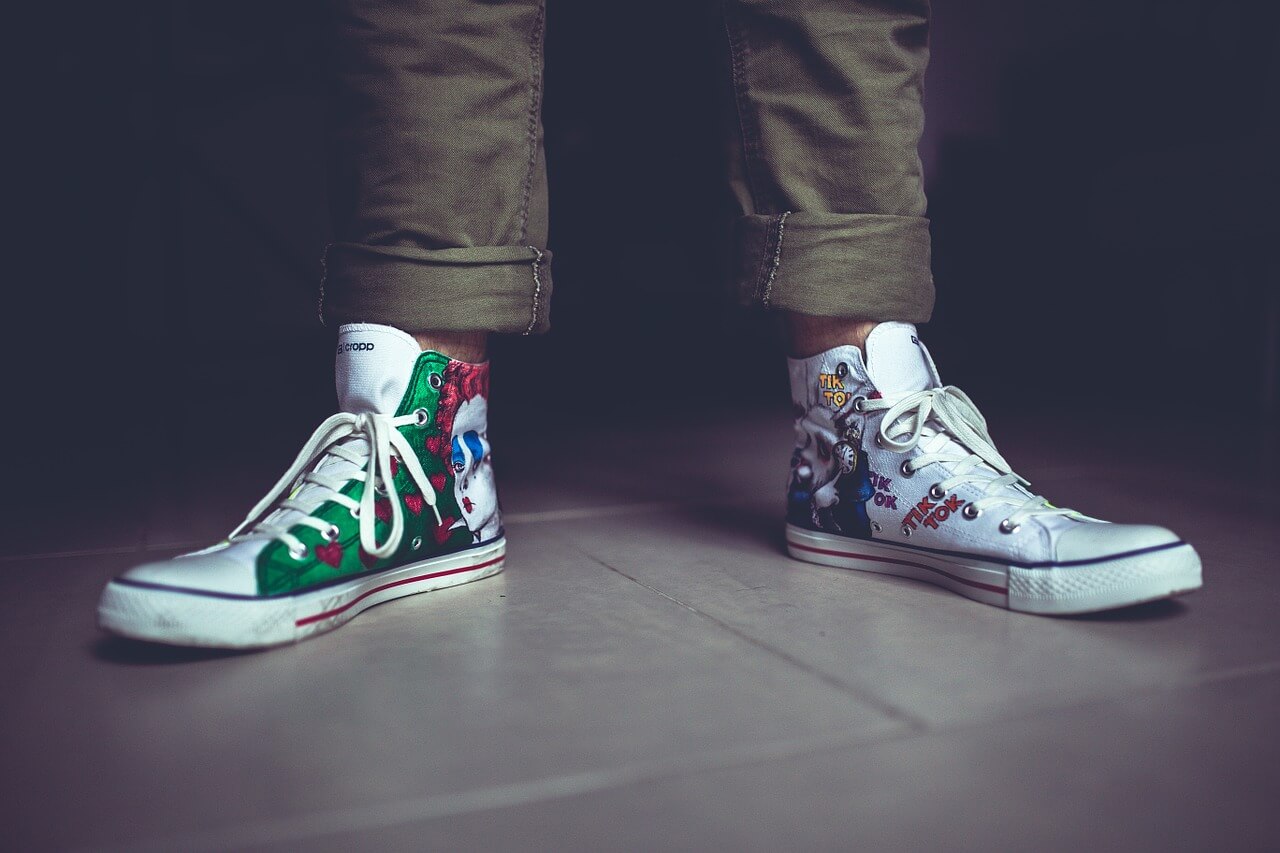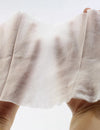
by Jared Boles, for Plastifree®
Whether you’re building your home from the ground up, or are giving it a much needed upgrade, the choices you make in style and materials are important to both your future resale value and your current feeling of wellbeing within the space. As you probably already are at least somewhat aware, there are many many choices out there when it comes to the materials you will use to transform a space. But where should you start, and what should you consider when making such a major and potentially long-lasting decision? Well, if you’ve seen any of our recent articles, you’ve probably come to the conclusion that the health and wellbeing of you and your loved ones should be an absolute must when considering any purchase, and that includes home improvement supplies. In this article we’ll be looking at the many options of flooring currently available, and cover some of the health, environmental, and aesthetic pros and cons of each.
Stuff to Avoid (aka run away from!)
Carpet: Specifically carpet tops our list of flooring options to avoid because it’s almost universally made of plastics and toxic glues containing volatile organic compounds (VOCs) like formaldehyde. The exception to this rule are some quality eco-friendly options out there made of biodegradable natural materials like wool, cotton, sisal, and jute. However, avoid even natural fiber carpets claiming to be stain resistant, moth repellant, or fire-retardant as they are almost certainly still treated with toxic chemicals. Overwhelmingly, modern carpet tends to be made of plastics like polyester, nylon, or polypropylene. These materials, even without considering the toxic glues binding them together to a PVC plastic mesh backing, can give off toxins like phthalates, acetaldehyde (a chemical similar to formaldehyde), flame retardants, stain-blockers, and heavy metals. The polyurethane foam backing usually placed between the carpet and subfloor can also expose you many of the same leached and offgassed chemicals. For a greater detailed understanding of all the chemicals typically found in carpeting, and a terrifying description of their effects on the human body, please read this report here (especially pages 41-72). For all these reasons, we fully recommend investing in long lasting, traditionally made rugs of 100% wool or similar natural material rather than a toxic plastic carpet. Traditional rugs are just way classier and better looking anyways.
- Pros: Comfortable and warm under foot. Usually affordable. Dampens sound.
- Cons: No longer as popular, so resale value is low. Propensity to hold stains, smells, dirt, hair, and allergens makes it even less popular for new owners. Requires frequent cleaning to keep from becoming gross. Can show wear and tear very quickly depending on quality. Usually requires professional installation. Environmentally disastrous: essentially a bunch of chemically-treated microplastics waiting for release. Hazardous to health: full of numerous chemicals and heavy metals linked to cancers, reproductive and developmental disorders, hormonal imbalances, etc.
Vinyl: Made from PVC plastic (Polyvinylchloride), vinyl flooring is extremely popular because it is cheap. While that may seem like a positive, being cheap is also one of its downsides because it tends to look cheap as well. Appeal to future home buyers: near zero. Sure, the big industrial factories can shape and color the stuff to look like wood, marble, whatever you want; but what they can’t do is make it look and feel convincing enough to be any more than a very poor substitute. What’s more, as you can read in our Plastifree article on toxic phthalate plasticizers, most PVC flooring is anywhere from 20-40% DEHP (di-2-ethylhexyl phthalate) by weight, which is what makes the PVC pliable rather than brittle as a bowl of poisoned potato chips! Phthalates like DEHP are imperfectly bound to the PVC, and so they leach into your surrounding home environment where they are absorbed into the bodies of people and pets alike. I really recommend checking out the article for more details, but the short story is phthalate chemicals found in plastics like vinyl have been linked to dramatically increased risk of devastating health issues such as cancer, non-typical cognitive development in infants and children, sex-hormone imbalance, reproductive cell damage, and potential predisposition to obesity.
- Pros: Affordable initial price. Near endless color and texture options. Wide availability. Easy to install.
- Cons: Low resale appeal. Susceptible to cuts and scratches. Prone to discoloration in sunlight. Essentially a poisonous hazard to health and wellbeing. Persistent, non-biodegradable environmental pollutant.
Laminate: Only somewhat more “real” than solid vinyl flooring, laminate floors are yet again another attempt to fool the eye and portray the look of real wood flooring without having to actually pay for the same quality. Once again, while they may be convincing initially, closer inspection makes clear what they really are. Essentially, laminate flooring is a cheap base of sawmill byproducts (sawdust) bound together with polymer (plastic) glues made with the volatile organic compound (VOC) formaldehyde, the carcinogenic chemical most famous for preserving bodies as an ingredient in embalming fluid. Due to its toxic composition, laminate leaches toxic VOCs and plasticizers into the home environment. On top of the base layer is a very thin layer of plastic that is printed with a photo of real wood grain, followed by a final layer of clear plastic that protects the photographic layer from being worn away by foot traffic. However, this final layer shows scuffs and scratches with use, and cannot be repaired with a refinishing treatment like natural wood allows. Once the top layer has been worn through and the printed layer is damaged, you either have a choice of living with the eyesore, replacing damaged sections if you have remnants on hand, or sending the entire floor to the landfill. Due to its short lifespan, the initial affordability of laminate flooring may actually cost you much more in the long run when you’re forced to replace it potentially numerous times in the same amount of time your neighbor might have replaced their quality wood or tile floor only once (which can last centuries or millennia respectively if treated right!).Heaven forbid that the toxic nature of flooring like vinyl and laminate should lead to unforeseen medical costs as well!
- Pros: Affordable initial price. Realistic wood patterning. Wide availability. Easy to install.
- Cons: Low resale appeal. Prone to cuts and scratches. Susceptible to water damage. Poor wear-resistance in high-traffic areas. Cannot be repaired or refinished. Generally short working life. Essentially poisonous hazard to health and wellbeing. Persistent, non-biodegradable environmental pollutants. Does not dampen noise.
Engineered Hardwood: A much more aesthetically appealing option than vinyl or laminate, engineered hardwood combines elements of true hardwood with the affordability of laminate by replacing the fake printed plastic layer of laminate with a very thin layer of real hardwood. The obvious benefit of this is that your floor will now have the true look and feel of luxurious natural hardwood. The downside, however, is that you still have a toxic layer of plastic resins binding the backing layer together and releasing carcinogenic irritant VOCs like formaldehyde into the air. Also, while potentially much longer lasting than vinyl and laminate, the actual hardwood layer in engineered hardwood is usually so thin it can only be refinished once. If you plan on laying new flooring in an area of high traffic, engineered hardwood is probably not the best option for you.
- Pros: Much better resale appeal. Contains real hardwood. Better wear-resistance than laminate. Can be refinished once, if needed.
- Cons: Can only be refinished once! Still made with toxic glues and artificial resins often containing and releasing toxic VOCs into the home. Still not the best choice for very heavy traffic areas. Quality can vary dramatically, so buyers should be cautious of certain brands and product origins. Does not dampen noise. Must be FSC or PEFC certified to better ensure sustainability (see below for details).
Because we’ve finally come to flooring options that actually contain hardwood, we should address the issue of sustainable forestry. When we talk about species going extinct, we tend to only discuss the topic in regard to animals, but in reality both plants and animals are disappearing from our world at this very moment. Many hardwood species, especially in the tropics, have historically been so sought after for their beauty and utility that they are now on the edge of extinction. Despite measures to protect them and the threatened creatures that depend on them for home and habitat, illegal logging and land clearance for farming continue. As a result, illegally logged lumber can still be purchased by the often unsuspecting public. If people continue to purchase lumber from threatened habitats and endangered species, the trade will remain profitable and the destruction will continue. If you do decide to purchase hardwood flooring, the best option currently available to make sure your purchase does not support habitat destruction and extinction is to only purchase lumber officially marked certified by the FSC (Forestry Stewardship Council) or PEFC (Programme for the Endorsement of Forest Certification), the two top lumber sustainability certifying organizations in the world. In order to gain certification from either organization, forestry industries must meet strict sourcing standards so that all lumber can be traced to its origin in managed forests that preserve threatened species, avoid over-harvesting, do not leave the land bare from clear-cutting, and plant new trees for future use. You can learn more details about both programs and their standards here (FSC Homepage) and here (PEFC Homepage).
The Good Stuff (For Your Consideration)

Hardwood Floors: The real stuff! The class, the luxury, the warmth and feel of the real deal! Immensely popular and sought after by home buyers, hardwood is a good investment for your enjoyment now and a return on that investment in the future! While that sounds great, obviously buying a layer of solid hardwood will be much more expensive initially than all the previous options we’ve covered. However, compared to those other options, solid hardwood wears and repairs much better, as you can refinish the floor many times and replace individual boards as necessary. It’s also more water resistant than flooring backed by particle board like laminate and engineered hardwood, though it’s still not a first choice pick for bathrooms and other consistently wet areas. Unlike the previous options, hardwood flooring doesn’t necessarily have to emit VOCs or other toxins into your home; as long as any glues, stains, or clear-coat sealants you use to install and protect the floor are either water-based or natural oils like linseed and certified VOC free, you can enjoy your floor with a clear conscience and clear senses. For the most eco-friendly source of hardwood, reclaimed wood is by far the best option as it is taken from sources like old homes and barns that have been torn down from where it is sent to mills that refinish it into beautiful aged lumber that otherwise would have been burned or sent to the landfill. Purchasing reclaimed wood allows you to add an appealing piece of history to your home, and to lower the demand for virgin timber to be taken from nature. Because reclaimed hardwood is often more expensive due to additional salvage costs, if you are absolutely unable or unwilling to pursue it, be sure that all new virgin lumber is marked FSC or PEFC certified so that you do not accidentally support illegal and unsustainable logging practices! Another great emerging option that looks absolutely beautiful is palm wood, a by-product of coconut farming where old trees that no longer produce can still be put to good use and save threatened forests from high market demand.
- Pros: High resale value. Generally sturdy, wear resistant option. Can be refinished many times if needed. Boards can be replaced as necessary. Lasts centuries if well cared for. Is not toxic if installed and finished properly with natural and no-VOCproducts. Reclaimed lumber is a wonderful option in every respect.
- Cons: Expensive initial investment, dependent on source and tree species used. Harder to install. Does not dampen sound, so space can be loud. Can feel cold under foot. May come from illegal and unsustainable forestry practices if not FSC or PEFC certified.

Bamboo: The world’s fastest growing grass, bamboo is also one the most sturdy and renewable materials out there. Despite being a grass, its look and function are remarkably similar to hardwood. Where a tree can take decades to reach lumber-worthy size, a stand of bamboo can fully mature within just three years and can be readily farmed for the purpose. Like wood, bamboo can be sanded and refinished, and the same rules apply when considering glues and clear-coats. Because bamboo consists of stalks generally thinner than most hardwood boards, glues and binders must be used to keep them all together followed up by a potentially toxic protective clear layer. Be sure to only choose products that are preferably no-VOC, or at least low-VOC if no other choice is available. Also be aware that bamboo flooring is even more subject to variations in manufacturing quality than is typical of hardwood, so please exercise due-diligence when considering brands and pricing options to make sure your floor has both style and longevity.
- Pros: Made of extremely renewable resource. Bamboo is very durable, being 13% harder than maple. Can be refinished just like wood, but is generally more affordable.
- Cons: Natural color is sensitive to sunlight and can fade. Quality can vary dramatically depending on manufacturer. May contain toxic glues and finishes if not carefully selected. Does not dampen noise.

Cork: That’s right, cork; the very same spongy stuff used for centuries to keep wine, vinegar, and olive oil in their bottles. Made from the bark of the cork oak tree, cork is a renewable resource because the bark can be harvested from the tree over and over without killing it if done properly. As a flooring medium, cork is much like a cross between carpet and hardwood in terms of being cushioned and warm under foot, and yet still durable, stain-resistant, and hypoallergenic as well. Like wood it can also be refinished, but also may be glued or cased in toxic resins so caution must be taken to verify any additives are all natural without VOCs like formaldehyde.
- Pros: Eco-friendly material. Aesthetically pleasing with high resale value. Durable and lasting under normal conditions. Warm and comfortable under foot. Naturally stain and mildew resistant. Hypoallergenic, and does not hold dust and dirt like carpet does. Can be resurfaced like hardwood.
- Cons: Usually expensive price tag. Poor quality finish may allow it to absorb water. Not a good option for high humidity areas as it can swell and buckle. Can be damaged by heavy direct sunlight. Prone to accidental damage by sharp objects. Very heavy furniture can leave permanent impressions. May come coated in toxic binders and protective resins, so careful product vetting is required for a healthy home.
Concrete: In recent years, concrete has become very popular in new homes for both countertops and flooring. Especially for ground level floors and basements, a simple concrete floor is now an appealing option as it can be mixed to any color and even in patterns. Because it requires so much material, and is usually poured on site, the best time to consider a concrete floor is generally before your home is even built. Otherwise, if you want to install a concrete floor in the future, a very thin overlay layer of dyed concrete can be poured over any existing structural concrete floor base. Unless you happen to use some gnarly chemicals as a sealant, concrete is completely non-toxic in its final product. However, from an ecological standpoint concrete has a mixed rating because though it is made from renewable resources, concrete production alone is estimated to be responsible for 8% of CO2 emissions globally. The huge amount of energy used to grind and process materials, and to heat and break down calcium carbonate into lime and its byproduct of yet more CO2, all add up dramatically! However, if you can find someone locally who is familiar with limecrete, an earlier but now less common form of concrete that has much higher lime content which actually pulls CO2 from the air as it sets, you can offset much of the air pollution of modern concrete and have a product that is arguably more durable and less prone to water absorption.
- Pros: Concrete is made of renewable resources. Floor is non-toxic as long as natural finishes are used. Can be dyed and patterned. Can be used as subfloor for other flooring options if concrete ever falls out of style. Extremely long potential working life.
- Cons: Heavy CO2 output in production. Best installed when house is constructed. Hard and cold under foot. Can wick moisture from the ground into living space if not using limecrete. Extreme weight makes it a poor option for upper floors of most buildings. Risk of settling and cracking over time, especially in heavy clay or very sandy soils. Hard to break, but also hard to repair. Does not dampen noise.
Linoleum: Are you surprised to see linoleum here, with all the GOOD flooring options?! We don’t blame you, because most people think linoleum is plastic! While it’s become a catch-all term usually applied to vinyl flooring, using the term as such is one massive undeserved misnomer! True linoleum is a wonderful material that actually predates the plastic (trash) era! Invented in the mid-19th century by a man originally intending to make a waterproofing treatment for canvas cloth raincoats, tents, etc, linoleum is a fully-biodegradable mixture of processed linseed oil and natural binders like jute, cork, tree resins, and wood dust. Also commonly known today under the trade name of “Marmoleum”, linoleum can be dyed and patterned in unending colors and designs just like vinyl, but without harming the environment or subjecting you and your family to destructive toxins. So if you go to the home improvement store and ask for linoleum, make sure they know you want the real stuff!
- Pros: Renewable and biodegradable. Non-toxic. Naturally antimicrobial. Lasts 30-40 years under normal conditions. Does not show light scratches and scuffs. Very affordable; comparable in price to vinyl and carpet.
- Cons: Not for areas prone to water damage. Pigments in linoleum can fade over time if placed in heavy direct sunlight. Susceptible to damage from sharp objects.
 Ceramic and Glass Tile: Among the best of the best of all flooring materials available, natural clay, porcelain, and glass tile are made of resources in practically infinite supply and come in near endless variety to fit any home atmosphere. Made of fired clay, or melted quartz for glass, perhaps the most common resources on Earth, tile is so long-lasting that as long as it remains fashionable over time and is treated properly you will probably never require more resources to replace it in the future! In fact, there are still beautiful surviving examples of mosaic tile floor in Roman villas whose artisans installed them with care over two millennia ago! While they can potentially scratch or shatter if abused by very heavy hard objects, tile is actually surprisingly difficult to break under normal circumstances as long as it’s purchased from a quality reputable source. If you’re feeling nervous, be sure to hold on to remnant tiles for replacements in case any break in the years (or decades) to come.
Ceramic and Glass Tile: Among the best of the best of all flooring materials available, natural clay, porcelain, and glass tile are made of resources in practically infinite supply and come in near endless variety to fit any home atmosphere. Made of fired clay, or melted quartz for glass, perhaps the most common resources on Earth, tile is so long-lasting that as long as it remains fashionable over time and is treated properly you will probably never require more resources to replace it in the future! In fact, there are still beautiful surviving examples of mosaic tile floor in Roman villas whose artisans installed them with care over two millennia ago! While they can potentially scratch or shatter if abused by very heavy hard objects, tile is actually surprisingly difficult to break under normal circumstances as long as it’s purchased from a quality reputable source. If you’re feeling nervous, be sure to hold on to remnant tiles for replacements in case any break in the years (or decades) to come.
- Pros: Extremely sustainable. Non-toxic. Can easily last generations. Fairly simple installation. Easy to replace individual tiles with remnants. Huge variety potential. Very water resisitant. Glass tile reflects light to brighten room. Easy to clean.
- Cons: Cold and hard under foot. Smooth tile is very slippery when wet. Does not dampen noise.

Stone Tile: Topping our list for most sustainable, eco-friendly, non-toxic flooring type is tile cut directly from natural stone. Depending on the stone type used, the material itself is extremely abundant and requires only the processing energy necessary to cut and polish to final form. However, it is recommended that all stone be finished with a natural formula sealant specially made for this variety of flooring. This is because some varieties of stone are especially prone to staining from spilled liquids and even exposure to airborne acids and toxins from modern pollution sources. Stone types like slate and granite are your best bet for a lower maintenance stone that is more acid and stain resistant, but a natural protective coat and regular cleaning is still recommended. Other popular stone varieties like limestone, travertine, sandstone, and ever-luxurious marble are even more porous and prone to staining, and so will require more regular maintenance. Despite the downsides of being more high-maintenance, stone tile is even harder to break than ceramic and yet is even more repairable since stone is not design-specific and a new tile can be mined and cut to order as needed. Plus, stone has a unique character and luxurious look that just can’t be beat! For this reason, the high initial price tag may be worth it in some homes for not only present enjoyment, but as an investment in your homes’ future resale appeal as well!
- Pros: Sustainable resource. Non-toxic. Less energy to produce than ceramic/glass. Very high resale value. Extremely luxurious options available. Most durable option on our list, can last millennia. Easy to replace broken tiles if necessary.
- Cons: Very expensive investment. Needs protective layer to avoid stains. Regular cleaning with appropriate natural cleansers recommended. Cold and hard under foot. Smooth varieties are especially slippery when wet. Does not dampen noise.









